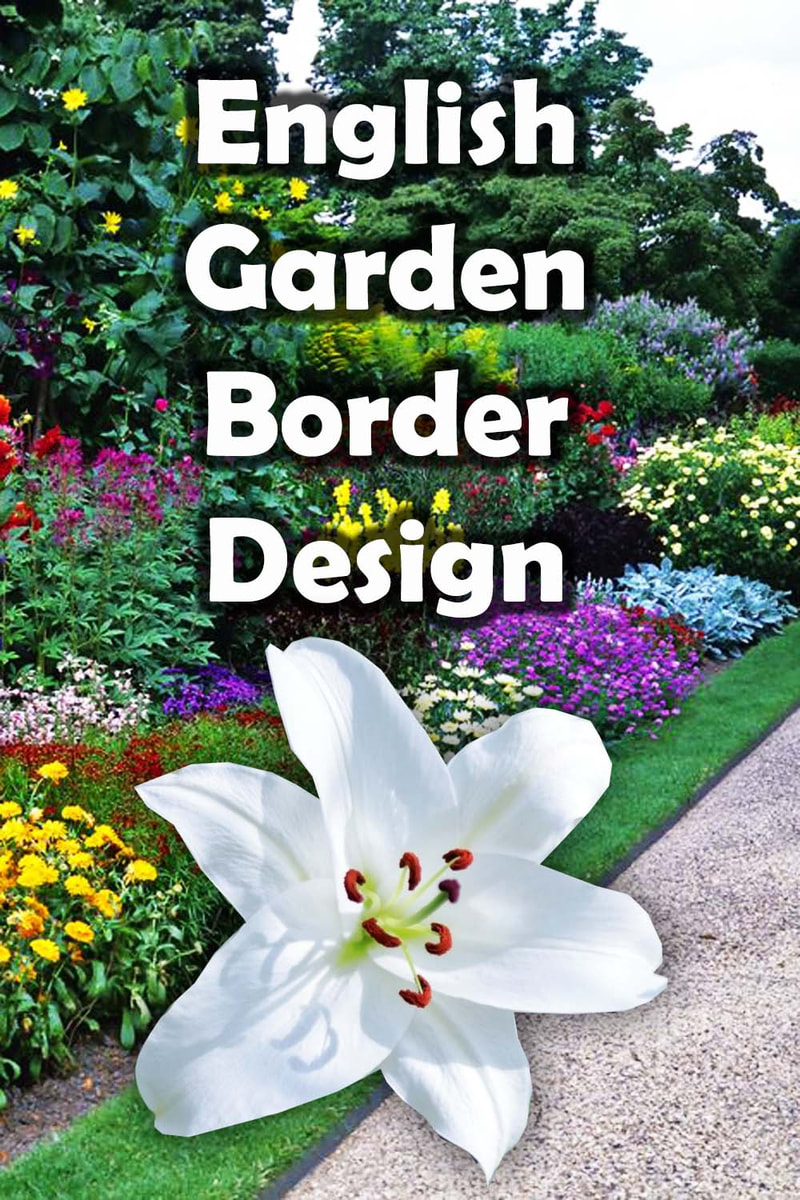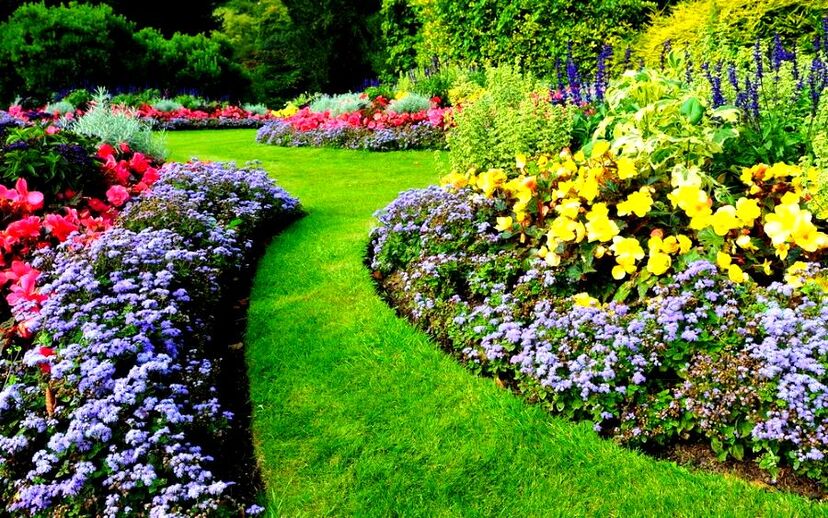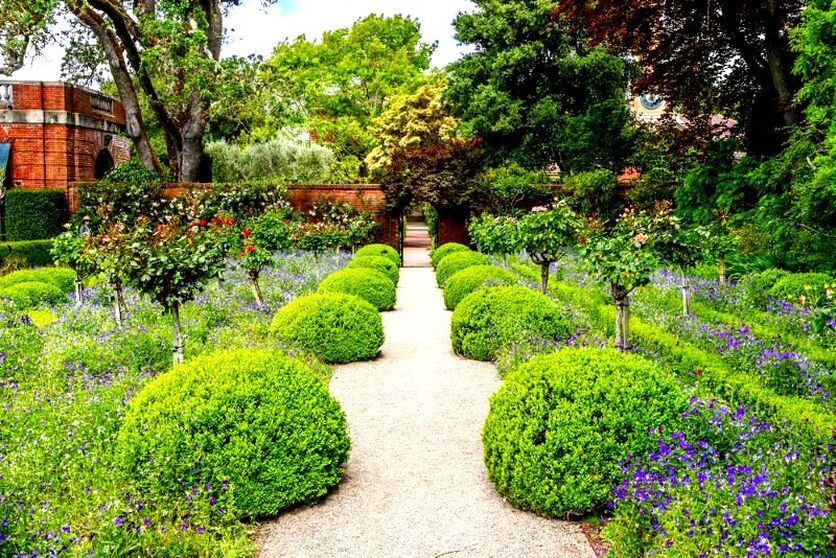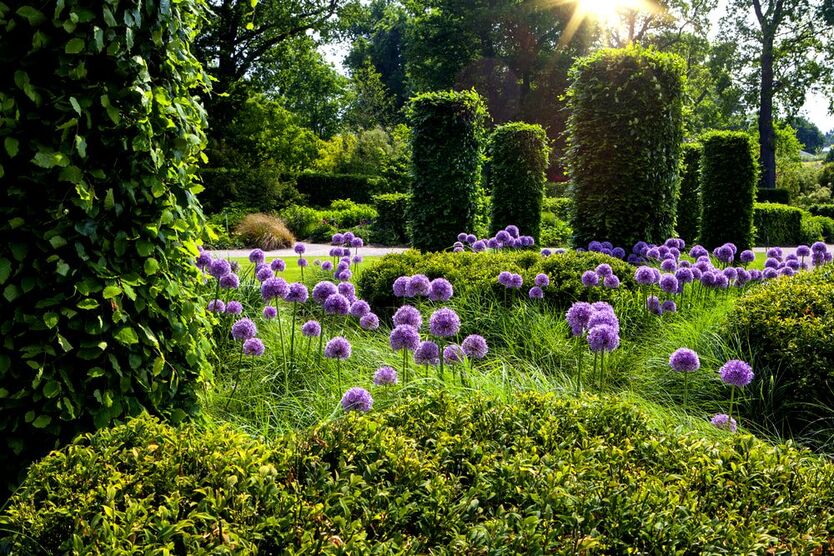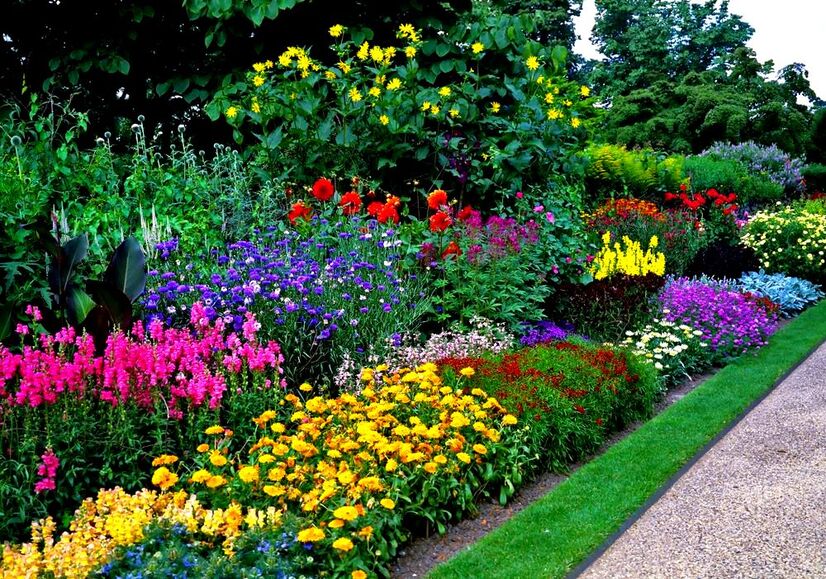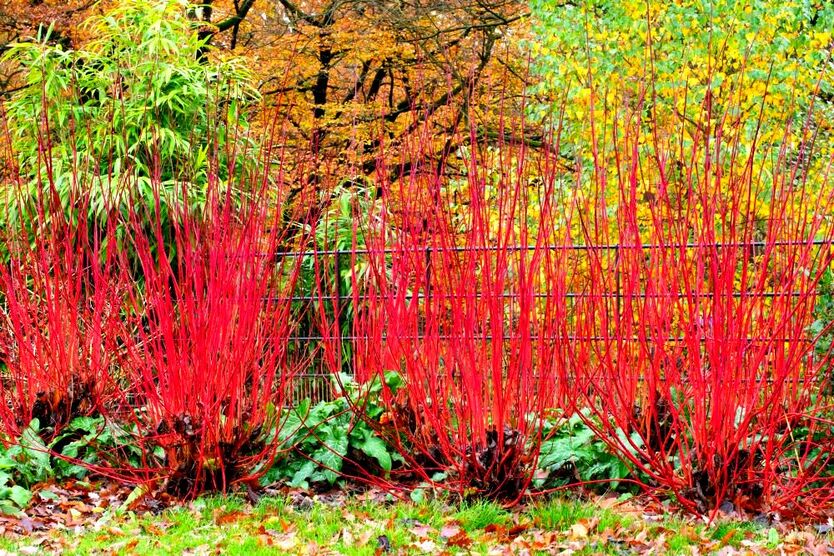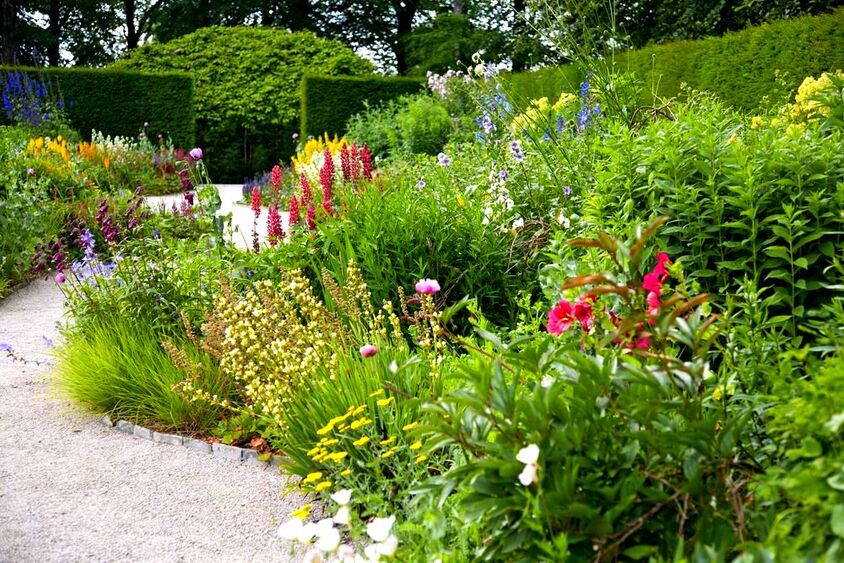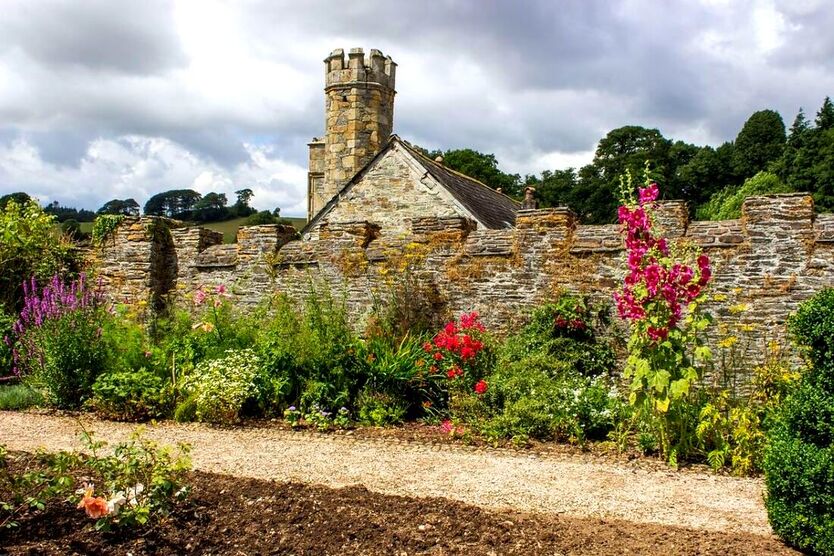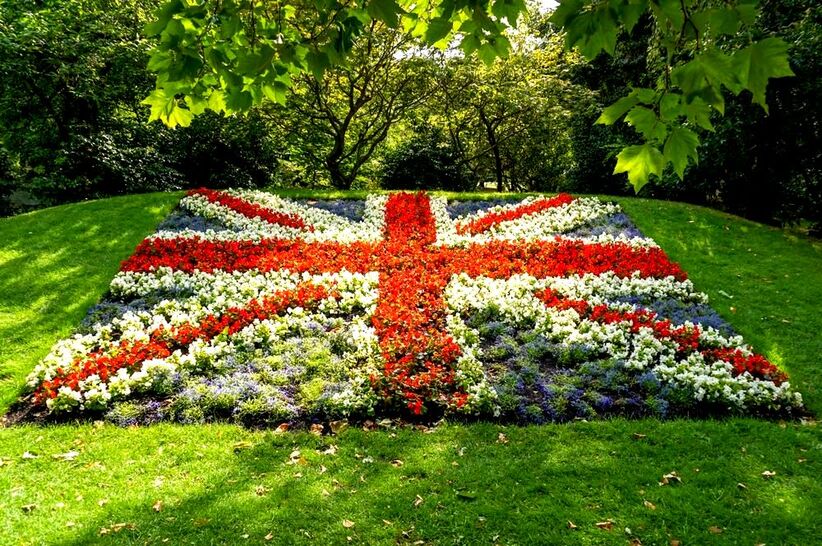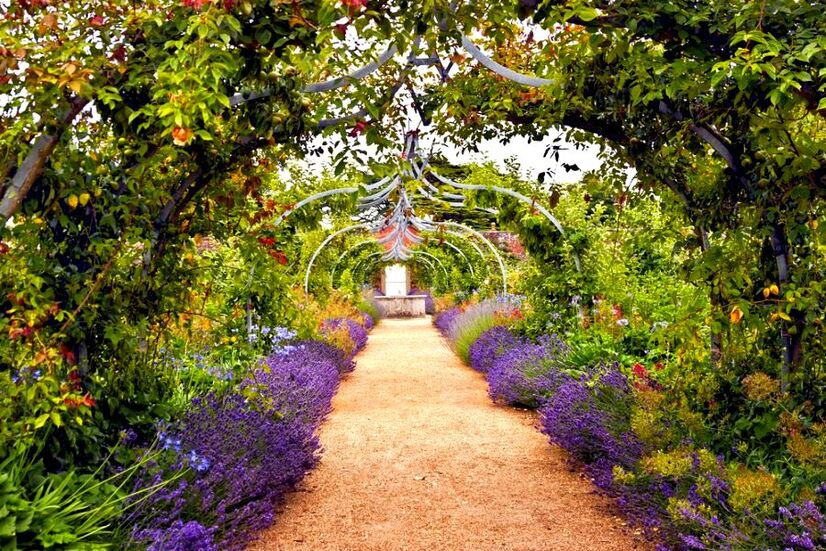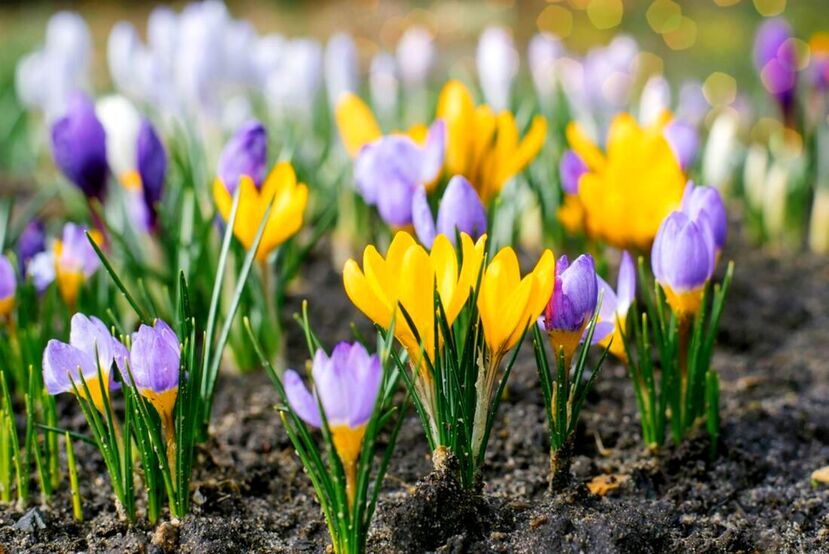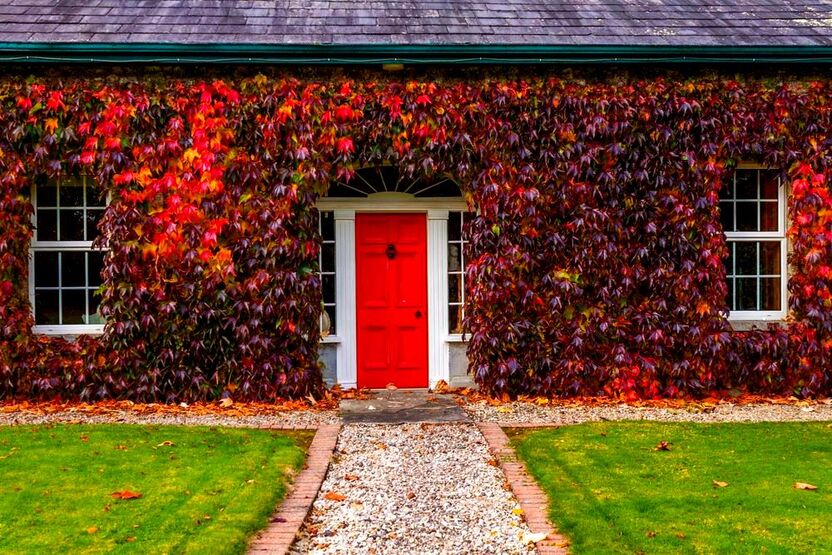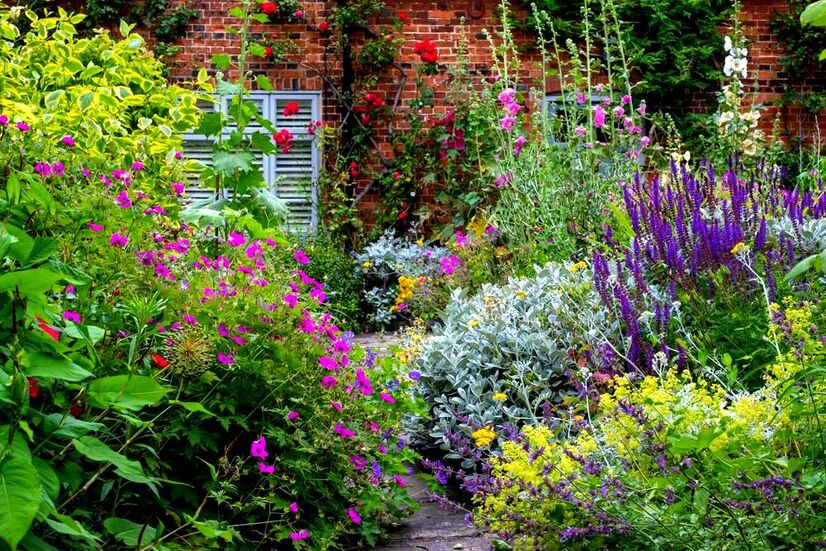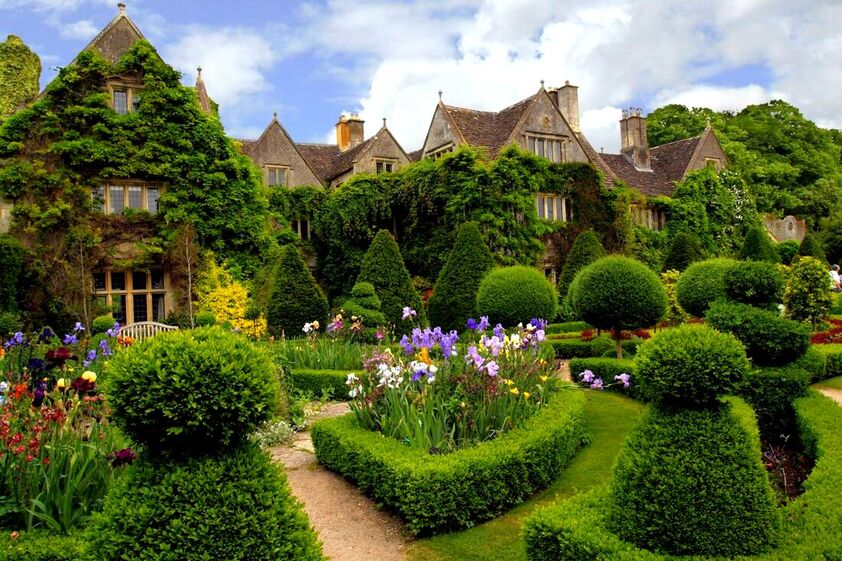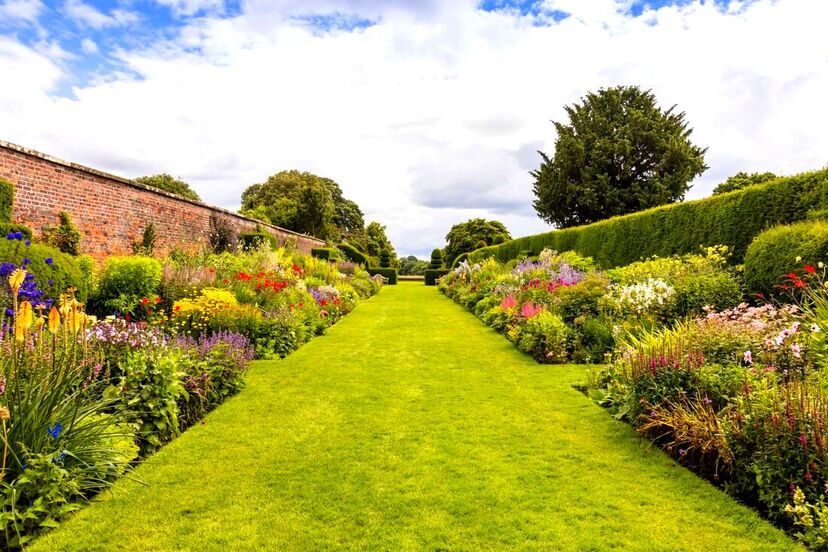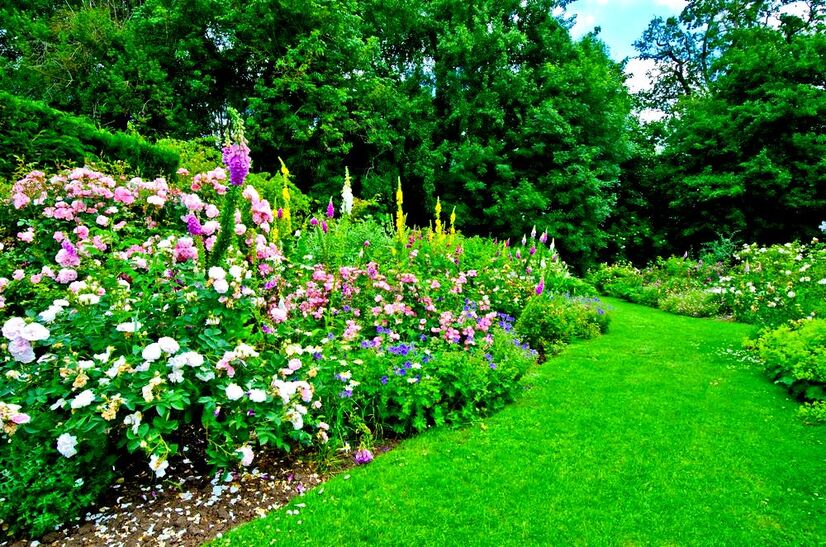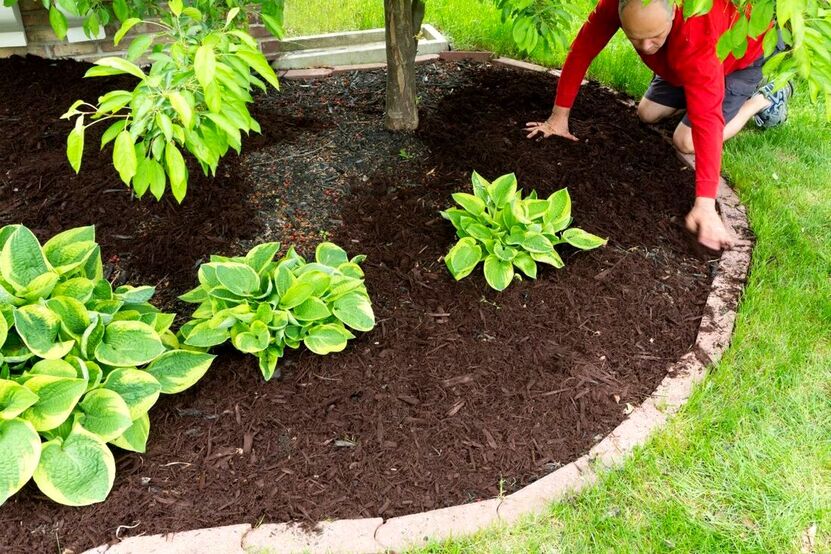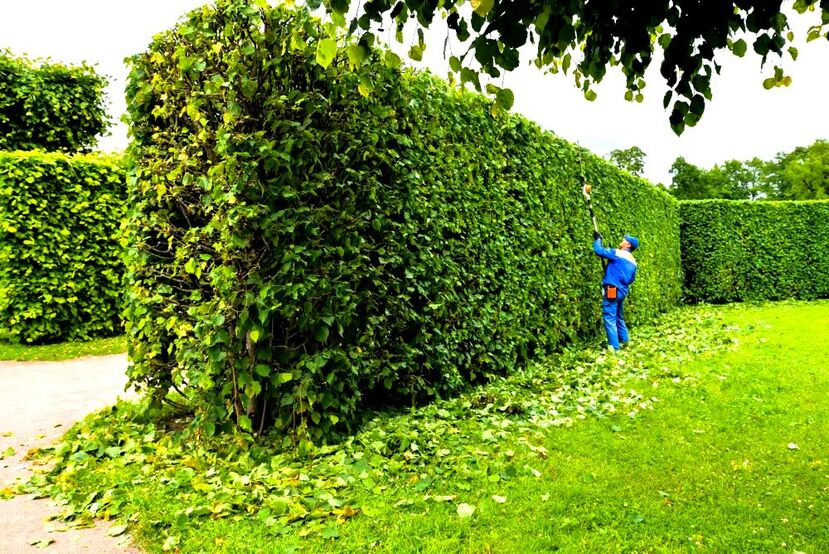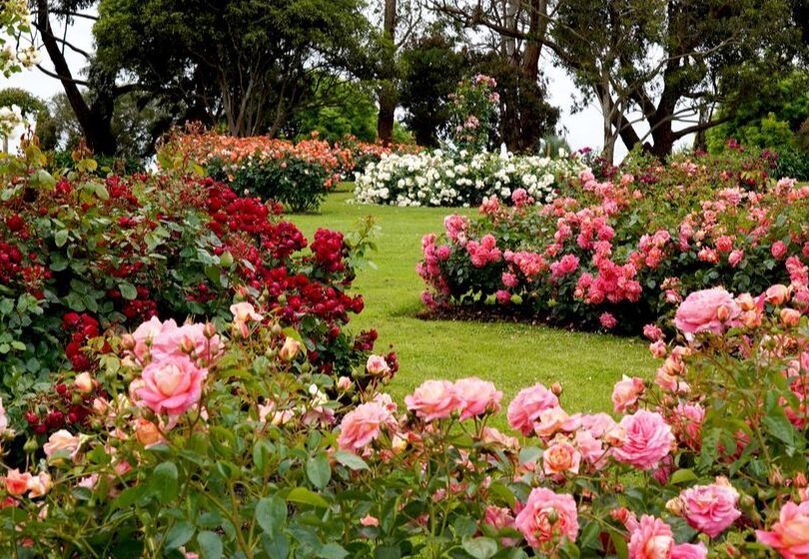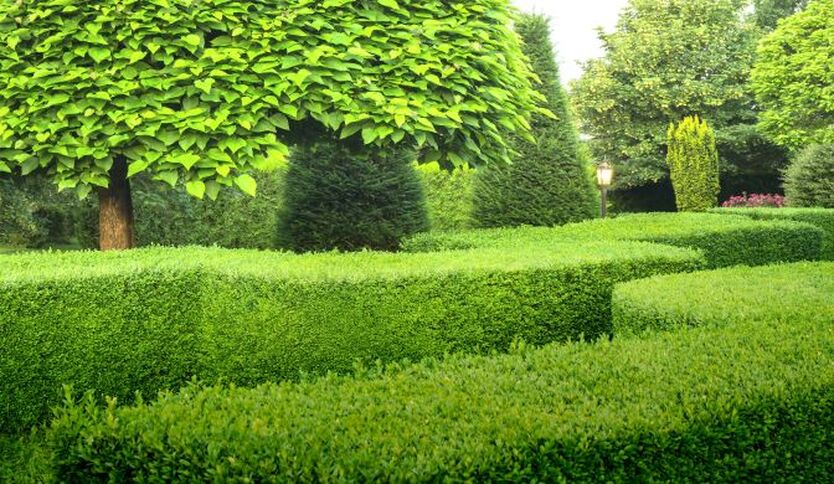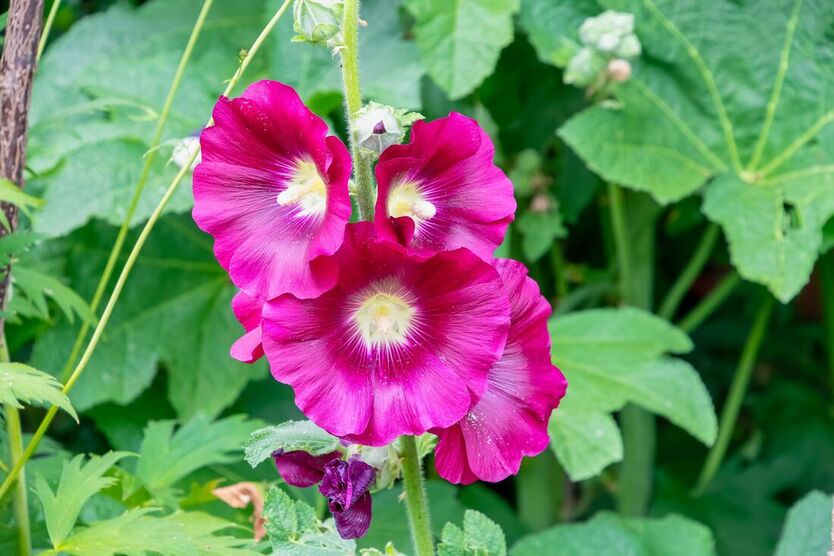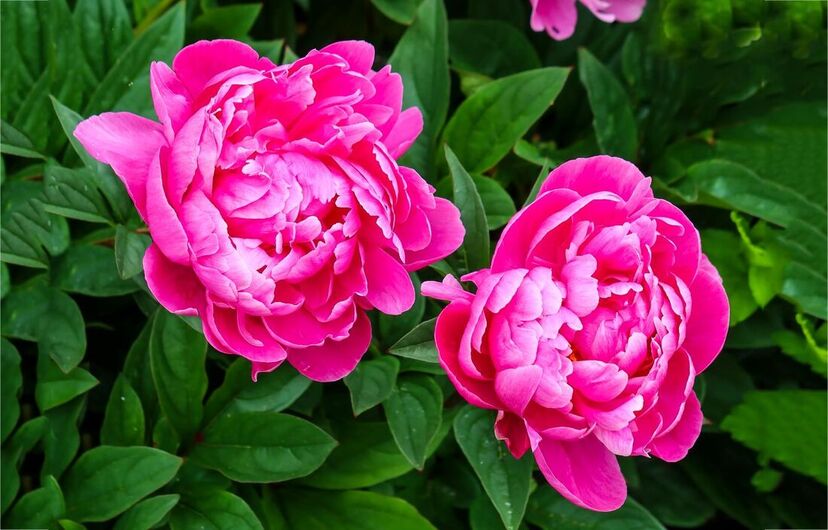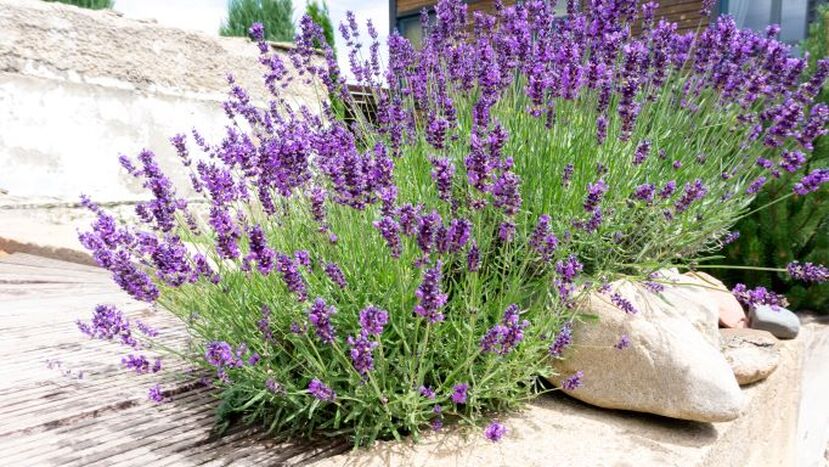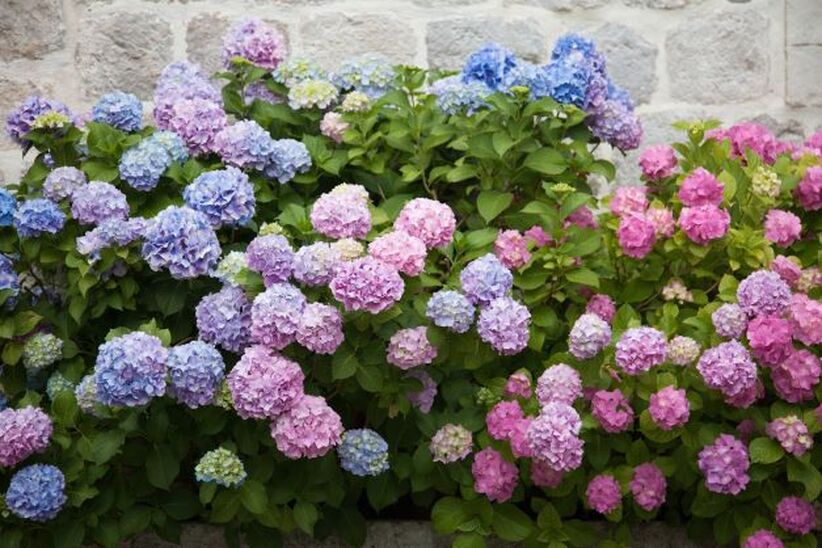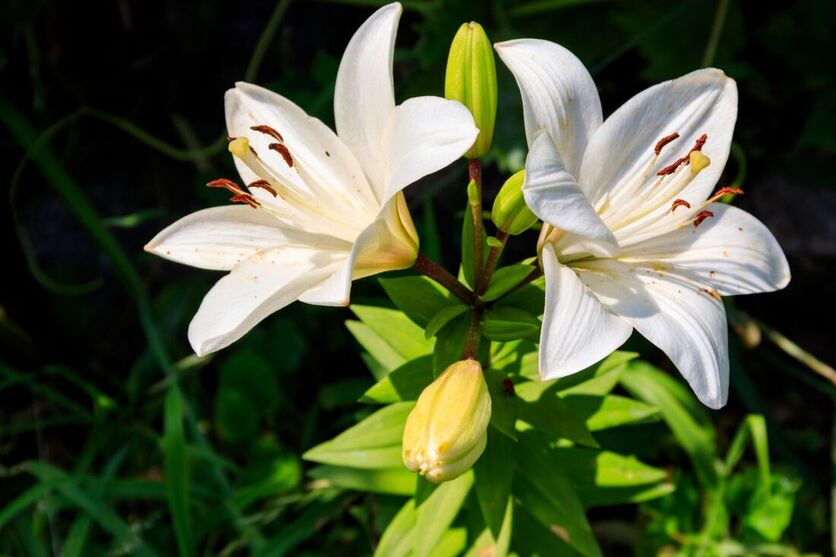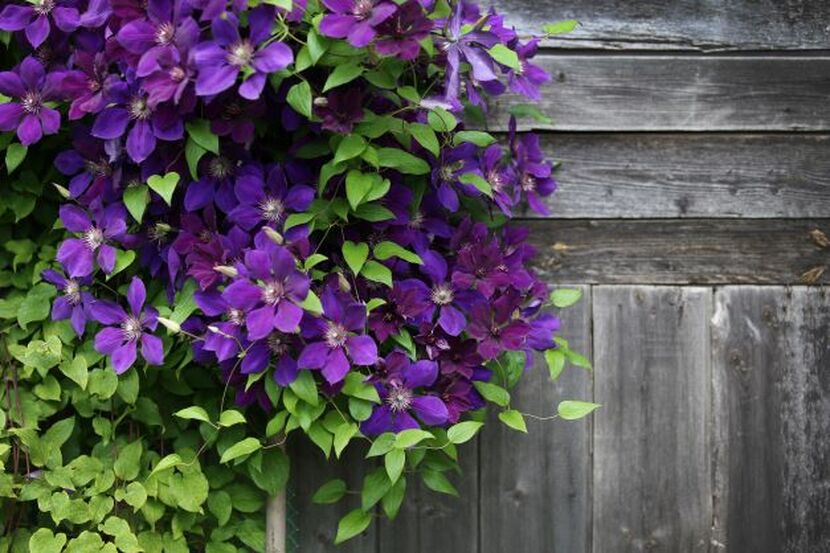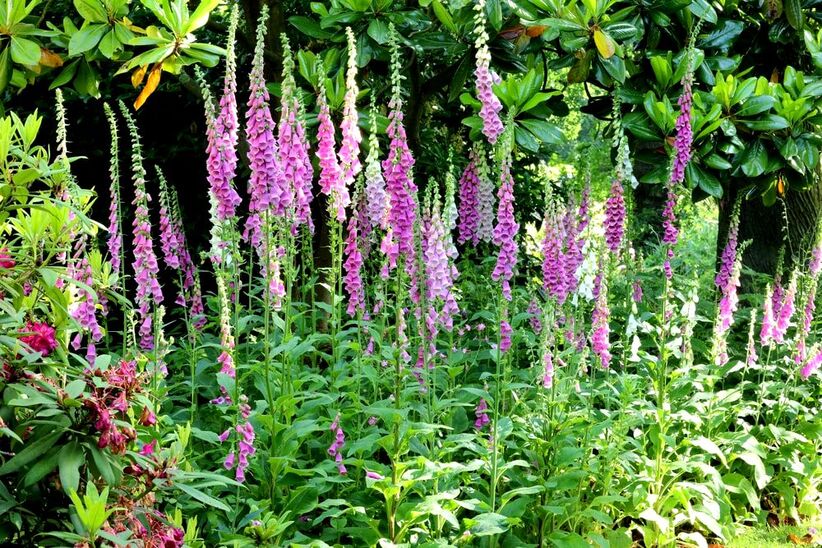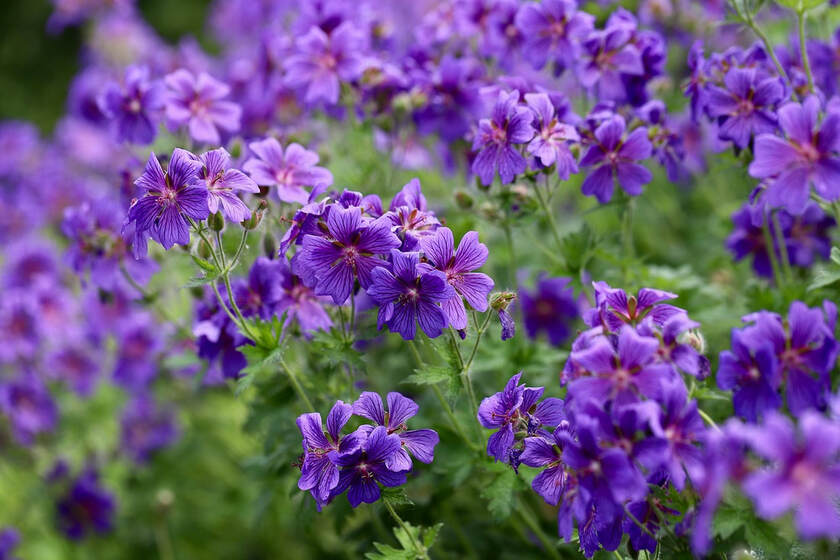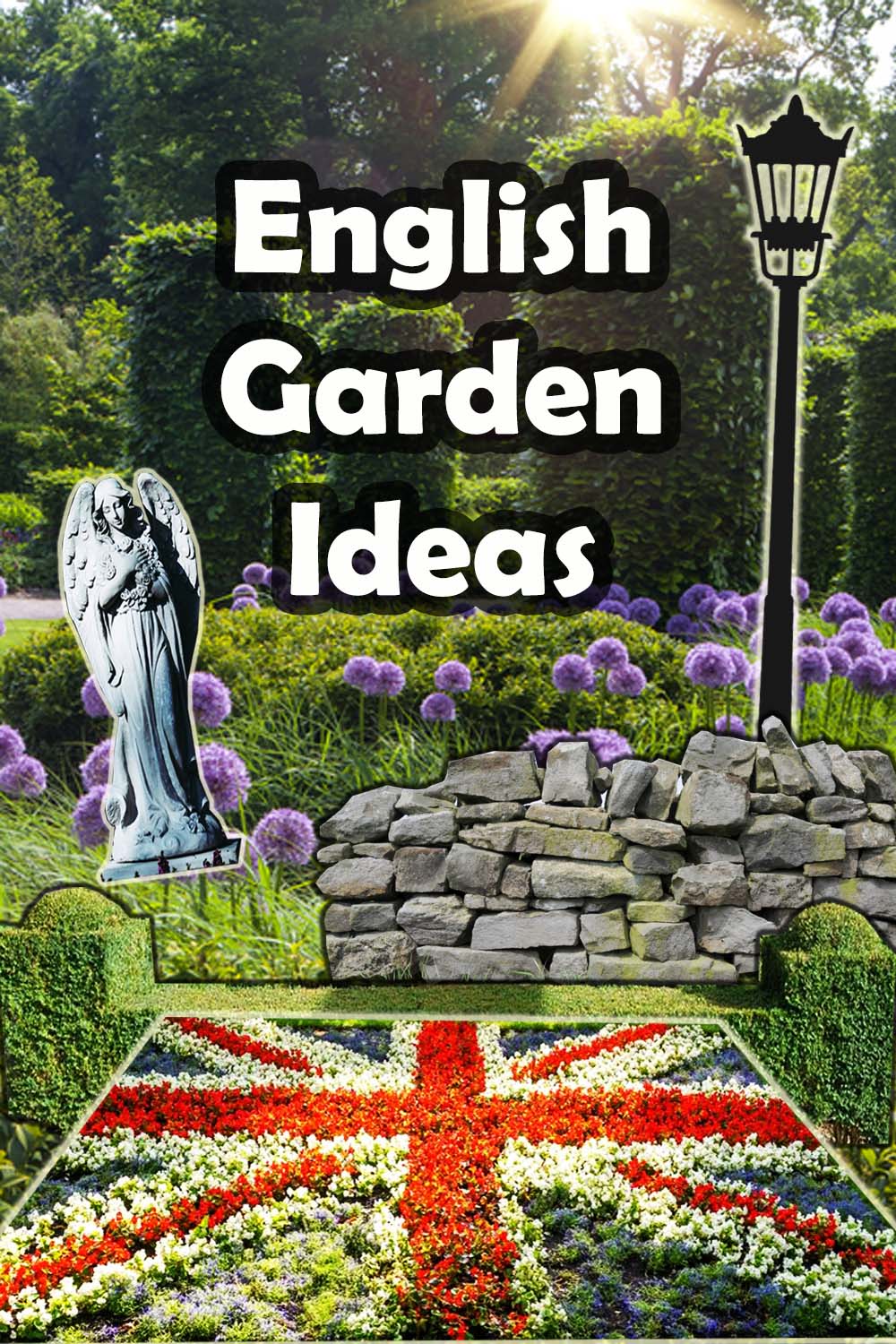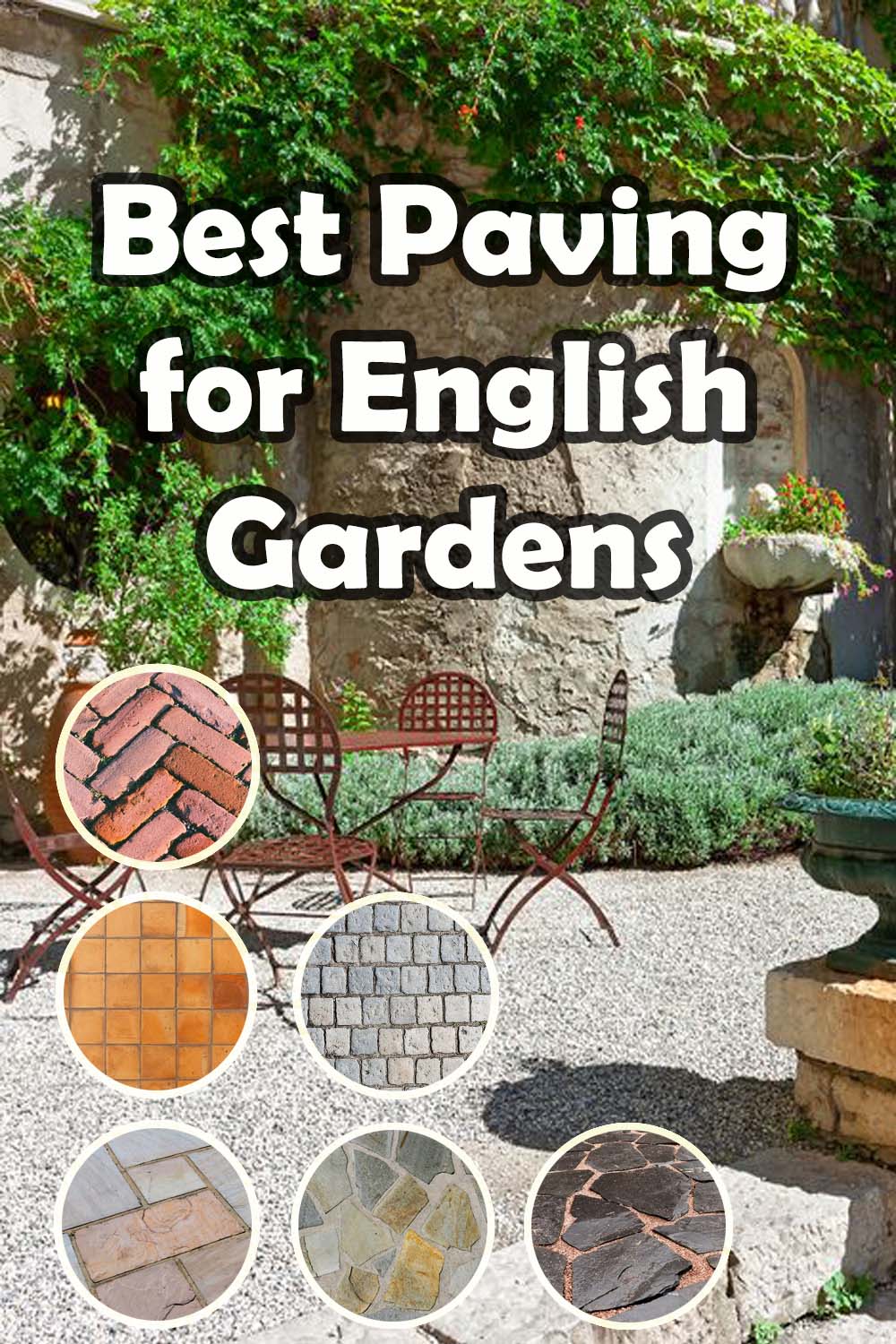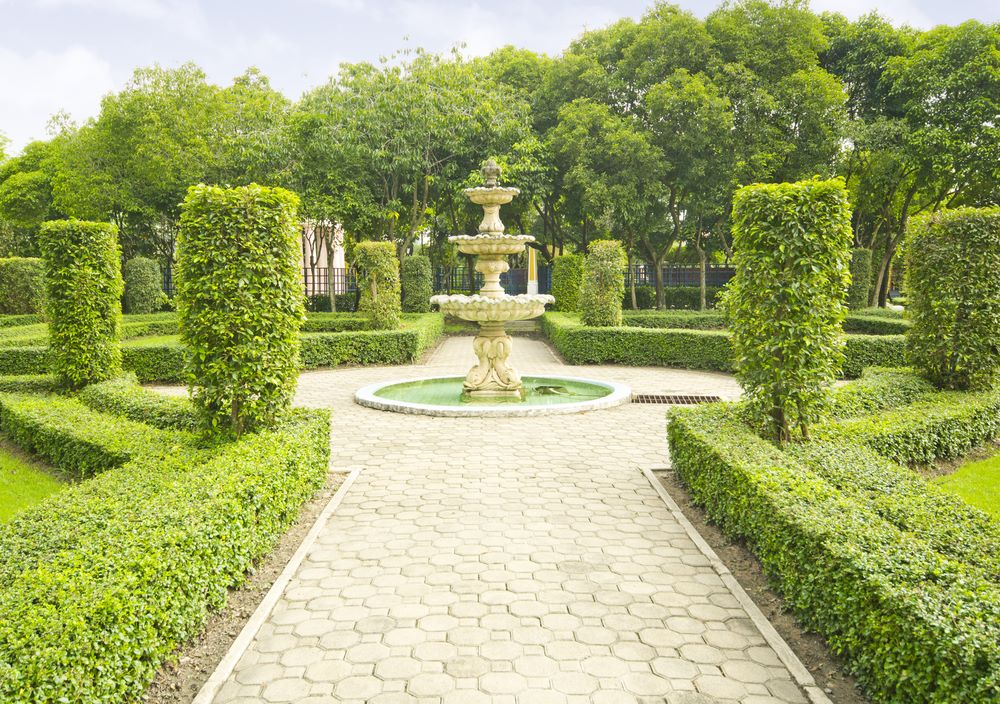|
This article contains affiliate links
If there is one thing that defines the very essence of English gardens it is the ore striking beauty of their borders.
English garden borders are generous with complex combinations of colours, textures, foliage and forms. Such intricate planting design historically evolved from passionate horticulturists and endless hours of experimentation. During England’s time as a global empire explorers and plant enthusiasts scoured the globe for rare and exciting plants. This led to a national obsession of dazzling planting displays and horticultural excellence.
Such excellence can be seen today in English gardens such as the world famous Kew, Sissinghurst andGreat Dixter.
From centuries of horticultural tradition to the latest gardening techniques English garden borders are the envy of the world. Here I will summarise the fundamental elements of English garden borders for a greater understanding of their success. If you want to create your very own English garden border keep reading for our comprehensive guide! English garden border design
English garden border design is a process of forming stunning plant displays which capture and celebrate the beauty of plants. English garden borders are normally are a response to a landscape design concept or specific theme. They are idolised for their dramatic display of seasonal colour and flowering displays. Some fundamental elements which make English borders so alluring is their use of; structure, colour, texture, contrast and seasonal interest. We will look at these fundamental planting design elements more closely below. Structure
Structure has always been a key element within English garden borders creating spatial hierarchy and a feast for the eye. It is very common for English borders to be backed by finely clipped hedges such as yew. This fine texture provides the perfect background to appreciate a borders planting display. Occasionally the front of borders will have finely clipped low hedging which creates a formal border. This border framing is a common feature which originated from historical, classical influences of the 1700’s. English garden borders are also commonly organised into distinct layers or tiers. Low planting and groundcovers are placed at the front and gently rise towards the rear of borders.
This allows the eye to follow the planting level up towards the rear of the border. It is also common for English planting to form pyramids of interest within borders. This packs more visual stimulation within a compact space.
Such a well worked structure within English gardens is a testament to their popularity. This planting hierarchy creates more visual interest within a limited amount of space. Such structured planting design requires a good knowledge of individual plant species and holistic planting palettes. Colour
English garden borders have always been well known for their vibrant use of colour. Any planting designer will know not every plant will look good all year round! Therefore a holistic and seasonal approach must be implemented to make borders interesting throughout the seasons. One of the largest contributors of colour within English garden gardens is the summer flowering season. English borders are famous for their use of colour combinations which work well and compliment the surrounding landscape. For example, a combination of blues, pinks and whites creates an atmosphere of tranquillity and serenity. Reds and yellows can create a more dramatic and exciting mood!
It is common for English garden designers to arrange plants according to specific colour palettes. This enables the designer to conform to specific design styles or themes.
Attention is also given to other seasons where flowers may make more of a localised impact. The use of colour within English gardens is not only restricted to the summer months! English gardeners also implement plants which have decorative stems, bark, fruits and seasonal colour. During winter coppiced Salix and Cornus can light up borders with their vibrantly coloured stems. Many shrubs are also grown specifically for their brightly coloured foliage tones. Texture
Visual textures are fundamental elements within English garden planting displays. Texture is not only admired from foliage of specific plants but at various distances from the border itself. Well clipped hedges may present themselves as smooth blocks within the landscape. Well positioned shrub plantings may manifest as coarse textures which contrast perfectly with lawns and hedges. Most English garden borders typically incorporate random novelties within planting displays. Do not be surprised if a block sunflowers or corn on the cob features abruptly. This is because English borders like to draw upon the excitement of supprise within their schemes. Varying textures cause a level of visual satisfaction and always evoke an emotional response.
Provoking a response can also be seen in the English love for more exotic plants within an their borders. Plants like Caster oil plant with their serrated leaves can cause dramatic textures and movement. Bamboos and tall ornamental grasses are also utilised to celebrate vertical walls of texture.
Hard landscaping elements can also help to create textures within English borders. Gravel mulches can be used around planting beds especially those with a Mediterranean feel. Screens such as woven hazel panels can be erected to the rear of borders to form textured backdrops. Trellis can also act as supports for various climbers which can provide walls of texture to borders. Contrast
Contrast is more of an important element within English gardens than some may expect. Contrast can add variation and excitement into a planting scheme as well as visual diversity. Some of the most impactful contrasts are colour contradictions within the planting design. There are many ways this can be achieved by leveraging the effect of flowers, foliage and the seasons. For example, the white bark of silver birch looks spectacular against a backdrop of red foliage. Contrast is also celebrated by the juxtaposition of planting with varying foliage tones. This can be exacerbated by growing specific coloured foliage within larger blocks creating even more dramatic contrasts.
Contrast can also achieved by adding novelty specimens and surprise plant combinations. This could be a species which has exceptional size or height than surrounding planting.
Or perhaps something more novelty or exotic compared to the surrounding plants. Bold contrasts can also be celebrated by leveraging the seasons. Bulbs can be planted on mass to create seas of colour when not much else is growing. Plants with multiple seasonal attributes can help to boost contrast throughout the gardening calendar. For example Crab apples will have exceptional spring blossom followed by lush foliage, autumn colour and then ornamental winter fruits. Seasonal interest
Seasonal interest and change is a key element of the English garden border. England has always had exceptionally changeable weather with cold winters and warm summers. However England also has a maritime climate which means it never gets as cold as the European continent. During early spring English gardens have the opportunity to benefit from a great diversity of bulbs. Snowdrops are followed by crocus and daffodils, then followed by tulips and late spring perennials such as Lupins.
Early summer becomes a vibrant display of emerging foliage and flowers. Various shrubs, climbers, perennials and summer bulbs come together to create amazing colour displays.
Autumn offers the opportunity to benefit from seasonal foliage displays and late flowering plants. This time of year is full of fruits and berries which signal the arrival of winter. Winter time is a period when English garden borders do not have to be empty! This season is a time to leverage the beauty of colourful bark and stems. Some trees and shrubs are evergreen or hold their golden leaves like beech.
Ornamental grasses turn attractive hues of golden yellow giving a drama to winter borders. There are also many winter flowering climbers and shrubs that will create excitement during this time of the calendar.
To make an English border exceptional at any time of year you will need to harness seasonal change! This will need to become a fundamental part of your planting design strategy and planting pallet. However, if you are not a professional garden designer this is easier said than done! A good strategy is to visit show gardens local to you at different times of year. This will give you an idea of what seasonal novelties grow well in your area. Alternatively a good book on planting design with seasonal change is a great alternative! Designing with precedent
One of the best ways to start designing your very own English garden border is with precedent. By visiting well known English gardens such as Sissinghurst and Wisley you can get plenty of inspiration. However, if you do not live in England or cannot travel, precedent images are just as Effective! These can be found by simply doing an online images search. Searching images of English garden borders will give you lots of design inspiration! Marking out your bordersOne of the first steps of creating an English garden border is by marking out its shape. Before you do this you may want to think about how your border will work with the rest of your garden. This can be investigated by sketching ideas onto a scaled plan or over printed images of your garden. Mark out your borders with pegs or line marker spray so you can start preparing your soil. Soil preparation
If your existing bed is currently lawn you will have to remove the top layer of grass. This can be achieved by chipping off the top inch of lawn with a sharp spade. The underlying soil will normally be compacted and nutrient poor so it will require amelioration. Turn the soil over in spade sized clods and break it up as much as possible! You will need to add as much organic matter as you can, well rotted manure or shrub compost works very well. If your soil is very heavy and sticky like clay you also may benefit from adding some sand or grit. Wait for a warm, dry day and break up the soil clods further with a tiller machine. Why not visit our article on how to improve garden soil here. Planting English garden borders
When selecting your plants for your border younger plants will be more affordable and establish faster. However, you will have to have a rough idea of how large each plant will become. Getting a plants spacing correct will enable them to mature and realise their natural form. This may require some research and preparation before you plant into the soil.
Set out all your plants into position with their appropriate spacing. You should be able to fill the beds surface area you have planned for, if not you can space them out more. Plant each plant into a planting pit twice the size of their root ball.
Consolidate the soil around the root ball well at the surrounding soil level. When you have finished planting make sure you water each, individual plant in well. Establishment
Once planted, your young plants will take some time to become established. It is very common for newly planted plants to not grow very much for the first few months. This is because they are putting down roots and building up strength. When planted in autumn your plants will not grow significantly until next spring. If you have planted during the growing season you will have to keep plants well watered as they establish. It is important that and weeds that establish between the plants are removed to stop them competing for nutrients. It is always advised to mulch new planting beds with either organic mulch or bark chippings. Mulching
Mulching is one of the most effective things you can do to for a new establishing border. A generous layer of organic mulch will suppress weeds and also help to retain moisture and improve soil quality. There are many different organic types of mulch you can use including ornamental bark much and wood chippings. Some of the most decorative options include products such as pine bark. For the best results spread a generous layer around establishing plants of around 50mm. This may sound a lot but mulch will slowly degrade over time! English garden maintenance
As your English border becomes established you will need to conduct some seasonal maintenance. Weeds will need to be removed by the roots before they become too large and composted. During hot, dry weather beds will need to be watered to keep the soil moisture content consistent. Dead or dying vegetation should be removed and light pruning applied to fast growing shrubs. Dead and dying material should be pruned away from perennials annually during autumn. There is also the opportunity to lift and divide bulbs and other spreading species to create extra plants. 10 Plants for English garden borders
When planting English borders there is never a set planting palette or species guide to stick to. English gardens are notoriously flexible and adaptable to other influences and styles. However, when it comes to typical plant choices for English borders I thought I would list some classics. Below I have listed 10 plants which are famous for featuring within traditional English borders. Roses
Roses are one of the most recognisable and classically utilised plants within English gardens. They have a timeless beauty, long flowering season and blooms that look and smell enchanting. Traditionally English gardens would dedicate whole borders to these beautiful shrubs. Mass plantings of roses would create a decorative and sweet smelling environment. Climbing roses were also extremely popular clambering up walls and over pergolas structures. Box
Also known by its Latin name 'Buxus sempervivums' is an evergreen shrub with small glossy leaves. Its small foliage and fine texture has led it to become very popular for formal hedging within English gardens. Box was typically used for building structure around borders and pathways within a more classical English border design. Low clipped box hedging would create formal corridors and frame focal points. They were also clipped into formal shapes and even animal forms using the art of topiary. Hollyhock
Hollyhocks are tall perennial flowering plants well known for their use within English and cottage garden borders. These plants are a part of the Mallow family and have tall flower spikes with brightly coloured flowers. In the English border they provide plenty of vertical interest and seasonal change. They have a formal elegance which makes them very suited to the English border style. Hollyhocks are also very attractive to bees and other pollinators and will self sow freely. PeoniesPeonies are a beautiful flowering plant with large, radiant, flowers that signal the start of summer. The flowers have multiple dense layers of petals with give them a rose looking flower. The way these plants quickly shoot up during spring mean they provide much seasonal drama. Due to their low growing nature they are perfect for adding early season colour to the front of borders. Peonies have an exceptional elegance which makes them perfectly suited to both traditional and modern English gardens. Lavender
English gardens have long had an obsession with this Mediterranean herb with a history going back centuries. This small shrub was grown for its exceptional fragrance and both culinary and medicinal uses. In English beds it is often used to along the front of borders and especially either side of pathways. As people brush past and disturb the foliage its adorable scent releases into the surrounding air. This plant also has the most elegant and hypnotic blue and purple flowers which dance on the breeze. Hydrangea
Hydrangeas are a very popular shrub within English gardens due to their versatility and large showy flowers. These shrubs have large and lush foliage which creates a dome like form within the border. This makes them perfect for filling generous English garden planting designs. This shrub also has a high shade tolerance and able to cope with multiple soil types. Hydrangeas have a long flowering season making them great value in English garden borders. Lilies
Lillies are probably one of the most dramatic plants in English borders packing a real punch. These plants have stunning exotic looking flowers with a powerful and intoxicating fragrance. During spring, these perennials shoot up on tall stems to produce an amazing early summer display. Lilies are particularly great around doorways or seating areas where they perfume the surrounding air. The fragrance can most be enjoyed during still summer evenings just before dusk. These plants, once established, are also extremely low maintenance but may need an early spring feed. Clematis
Clematis are an extremely varied genus of climbing plants very popular within English garden borders. They are highly valued for their amazing flowers which are decorative complex and striking. In English gardens these are often found climbing over archways and pergolas along pathways or seating areas. These climbers are also particularly useful for covering fences and trellises. Evergreen varieties such asArmandii can also be particularly useful for screening bad views. Many Clematis also have long flowering periods and are often sweetly scented. Foxglove
Foxglove is a woodland wildflower that has long been celebrated within English garden borders. They have tall flower spikes with hanging tubular flowers which are extremely popular with bees. In English borders Foxgloves have the natural ability to self seed and put up with shady competition. This means they can add even more colour and seasonal interest to already established borders. These biennial flowers are particularly favourable for more naturalistic English or traditional cottage garden borders. Geranium
Geraniums have always had a place within the English border due to their versatility and long flowering season. Once established, these plants can form extensive groundcovers requiring very little maintenance. They are perfect for the front of borders and between taller flowering specimens. Geranium flowers are also extremely beneficial to numerous pollinators and beneficial insects. These low growing plants are suitable for both traditional and more modern English garden borders.
If you require English cottage garden creation or garden landscaping services do not hesitate to contact us. Based in Amersham we undertake a wide range of garden landscape projects. Our landscaping services include; brickwork, paving, pathways, edging installation, fencing, drainage systems, landscape design, garden clearances, new lawns garden re-levelling, ponds, wildlife gardens and gravel installation. We cover most of Buckinghamshire including: Hertfordshire, Oxfordshire and the local regions of Amersham, Aylesbury, Beaconsfield, Chesham, Chalfont Great Missenden, Gerrards cross, High Wycombe & Tring
'As an Amazon associate I earn from qualifying purchases'
0 Comments
Leave a Reply. |
The Author
|
Landscaping services across Buckinghamshire, Amersham, Aylesbury & High Wycombe
Hyde Heath, Amersham, Buckinghamshire |
|
